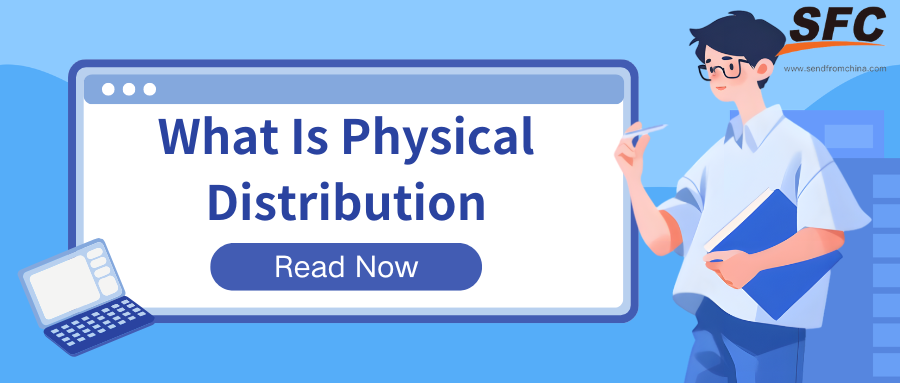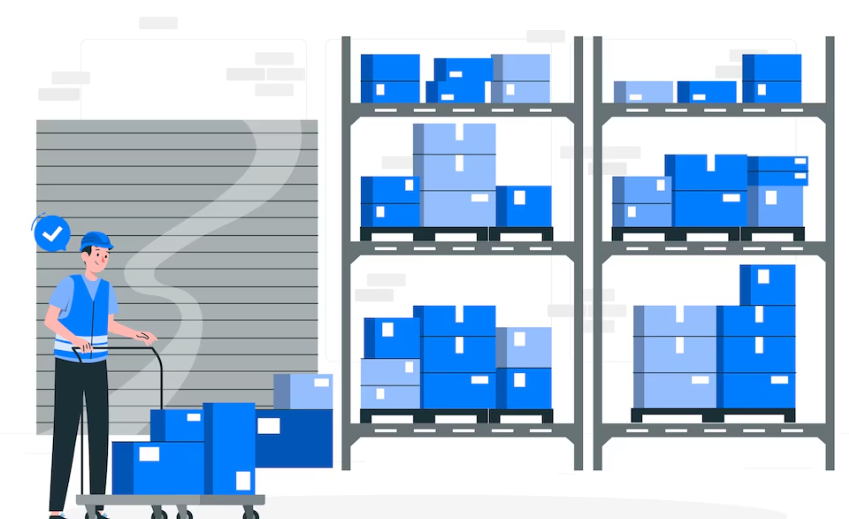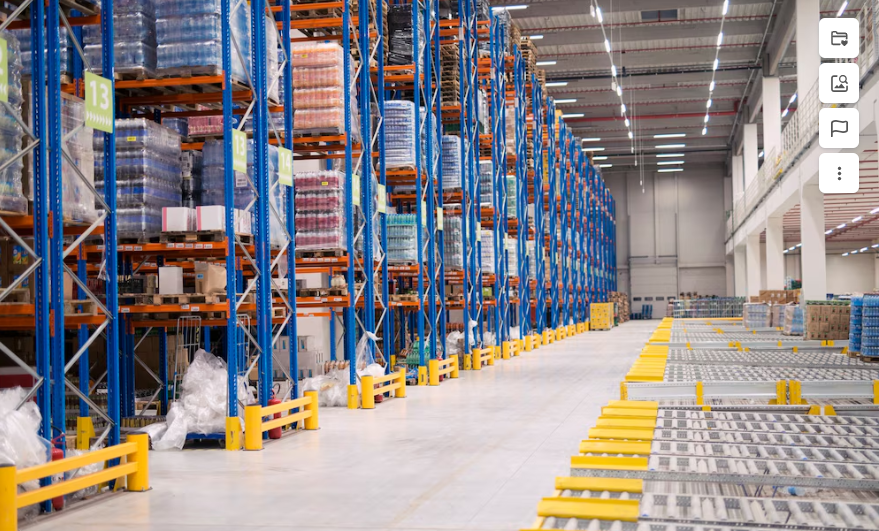Table of Contents
What Is Physical Distribution? A Complete Guide for E-commerce Success
Time: May 09,2025 Author: SFC Source: www.sendfromchina.com
Ever wondered how that online order arrives at your doorstep so swiftly? Behind the scenes, a well-orchestrated system called physical distribution is at play. The process involves the movement of goods from the point of production to the final consumer, encompassing storage, handling, and transportation. In the realm of e-commerce, efficient physical distribution is the backbone that supports quick deliveries and happy customers.

1. What Is Physical Distribution?
Physical distribution refers to the comprehensive process of moving finished goods from manufacturers to end consumers. It encompasses activities such as warehousing, inventory management, order processing, transportation, and delivery. It serves as a critical component of the supply chain, ensuring that products are available at the right place, at the right time, and in the right condition.
In essence, physical distribution bridges the gap between production and consumption, facilitating the efficient flow of goods to meet customer demand. It involves strategic planning and execution to optimize logistics operations, reduce costs, and enhance customer satisfaction.
2. Why Physical Distribution Matters for Ecommerce?

In the digital age, where online shopping has become the norm, the significance of physical distribution in e-commerce cannot be overstated. While the purchasing process occurs virtually, the fulfillment of orders relies heavily on efficient physical distribution systems. The section delves into the critical reasons why physical distribution is paramount for e-commerce businesses.
Enhancing Delivery Speed and Efficiency
Customers today expect swift and reliable delivery of their online purchases. Efficient physical distribution ensures that products move seamlessly from warehouses to customers' doorsteps. By strategically locating fulfillment centers closer to key markets, businesses can reduce transit times and meet customer expectations for rapid delivery.
Reducing Operational Costs
Optimized physical distribution can lead to significant cost savings. By analyzing order data and customer locations, companies can position inventory in regions with high demand, minimizing shipping distances and costs. The strategic placement reduces the need for expedited shipping methods, which are often more expensive, thereby improving profit margins.
Improving Inventory Management
Effective physical distribution involves meticulous inventory control. By maintaining optimal stock levels across various distribution centers, businesses can prevent stockouts and overstock situations. The balance ensures that products are readily available for fulfillment, enhancing customer satisfaction and reducing storage costs.
Enhancing Customer Satisfaction
Timely and accurate deliveries are crucial for customer satisfaction in e-commerce. A well-structured physical distribution system ensures that customers receive their orders as promised, fostering trust and loyalty. Moreover, efficient handling of returns and exchanges, facilitated by a robust distribution network, further enhances the customer experience.
Supporting Scalability and Growth
As e-commerce businesses expand, their distribution needs become more complex. A scalable physical distribution system allows companies to handle increased order volumes without compromising on delivery speed or accuracy. By investing in flexible distribution infrastructure, businesses can adapt to market changes and support long-term growth.
3. Functions of Physical Distribution

Physical distribution encompasses several key functions that collectively ensure the smooth flow of goods from producers to consumers:
Order Processing: Managing customer orders accurately and efficiently to initiate the fulfillment process.Inventory Management: Maintaining optimal stock levels to meet demand without overstocking or stockouts.
Warehousing: Storing goods securely and strategically to facilitate timely distribution.
Transportation: Selecting appropriate modes of transport to deliver goods cost-effectively and on time.
Material Handling: Efficiently moving goods within warehouses and during loading/unloading to prevent damage and delays.
Packaging: Protecting products during transit and providing necessary information through labeling.
Customer Service: Addressing inquiries, handling returns, and ensuring customer satisfaction throughout the distribution process.
Each function is integral to the overall effectiveness of physical distribution, contributing to operational efficiency and customer satisfaction.
4. Strategies for Effective Physical Distribution

In the competitive landscape of e-commerce, mastering physical distribution is crucial for ensuring timely deliveries, optimizing costs, and enhancing customer satisfaction. Implementing effective strategies can significantly improve the efficiency and reliability of your distribution network.
Optimize Inventory Placement
Strategically positioning inventory closer to key markets reduces transit times and shipping costs. By analyzing customer data and demand patterns, businesses can determine optimal warehouse locations to serve high-demand areas efficiently. The approach not only accelerates delivery but also minimizes the risk of stockouts in critical regions.
Leverage Technology for Real-Time Visibility
Implementing advanced technologies such as Warehouse Management Systems (WMS) and Transportation Management Systems (TMS) provides real-time insights into inventory levels, order statuses, and shipment tracking. These tools enable proactive decision-making, allowing businesses to address potential issues promptly and maintain a seamless distribution process.
Diversify Transportation Modes
Utilizing a mix of transportation options—such as road, rail, air, and sea—enhances flexibility and resilience in the distribution network. Diversification allows businesses to adapt to disruptions, optimize shipping costs, and meet varying delivery timeframes based on customer requirements and product types.
Implement Cross-Docking Practices
Cross-docking involves transferring products directly from inbound to outbound transportation with minimal or no storage time. This strategy reduces inventory holding costs, minimizes handling, and accelerates the movement of goods through the supply chain, leading to faster deliveries and improved efficiency.
Adopt Just-In-Time (JIT) Inventory Management
JIT inventory management focuses on aligning inventory levels closely with actual demand, reducing excess stock and associated carrying costs. By receiving goods only as needed for production or order fulfillment, businesses can enhance efficiency and respond more agilely to market changes.
Enhance Collaboration with Supply Chain Partners
Establishing strong relationships and open communication channels with suppliers, carriers, and logistics providers fosters better coordination and information sharing. Collaborative planning and forecasting enable synchronized operations, reducing delays and improving overall supply chain performance.
Focus on Sustainability Initiatives
Incorporating environmentally friendly practices into physical distribution not only benefits the planet but also resonates with eco-conscious consumers. Strategies include optimizing delivery routes to reduce fuel consumption, utilizing energy-efficient transportation modes, and adopting recyclable packaging materials.
Monitor and Analyze Key Performance Indicators (KPIs)
Regularly tracking KPIs such as order accuracy, delivery times, transportation costs, and customer satisfaction provides valuable insights into the effectiveness of distribution strategies. Continuous analysis and improvement based on these metrics ensure that the distribution network remains efficient and responsive to evolving business needs.
5. Conclusion
Physical distribution is a critical component of the supply chain, directly impacting customer satisfaction and business profitability. In the context of e-commerce, efficient physical distribution ensures that customers receive their orders promptly and in good condition, fostering trust and loyalty. By understanding and optimizing the functions and strategies of physical distribution, businesses can enhance their operational efficiency and gain a competitive edge in the market.
6. FAQs
Q1: What is the primary goal of physical distribution?
To deliver the right products to the right place at the right time, in the right condition, while minimizing costs.Q2: How does physical distribution affect customer satisfaction?
Efficient distribution ensures timely and accurate deliveries, enhancing the overall customer experience.Q3: What role does technology play in physical distribution?
Technology streamlines processes like inventory management, order tracking, and route optimization, improving efficiency.Q4: Why is inventory management important in physical distribution?
Proper inventory management balances supply and demand, reducing holding costs and preventing stockouts.Q5: How can businesses make their physical distribution more sustainable?
By adopting eco-friendly practices such as using energy-efficient transportation and recyclable packaging materials. Post Views:12
Post Views:12
Copyright statement: The copyright of this article belongs to the original author. Please indicate the source for reprinting.
Previous Post
Next Post
What Are Retail Partnerships? Types, Examples & How to Make Them Work
TAGS
Hot Research
Recent News
Get a Custom China Fulfillment Solution with FREE Storage for 60 Days
 Want to know about our services, fees or receive a custom quote?
Want to know about our services, fees or receive a custom quote?
 Please fill out the form on the right and we will get back to you within a business day.
Please fill out the form on the right and we will get back to you within a business day.
 The more information you provide, the better our initial response
will be.
The more information you provide, the better our initial response
will be.





 TAGS:
TAGS: